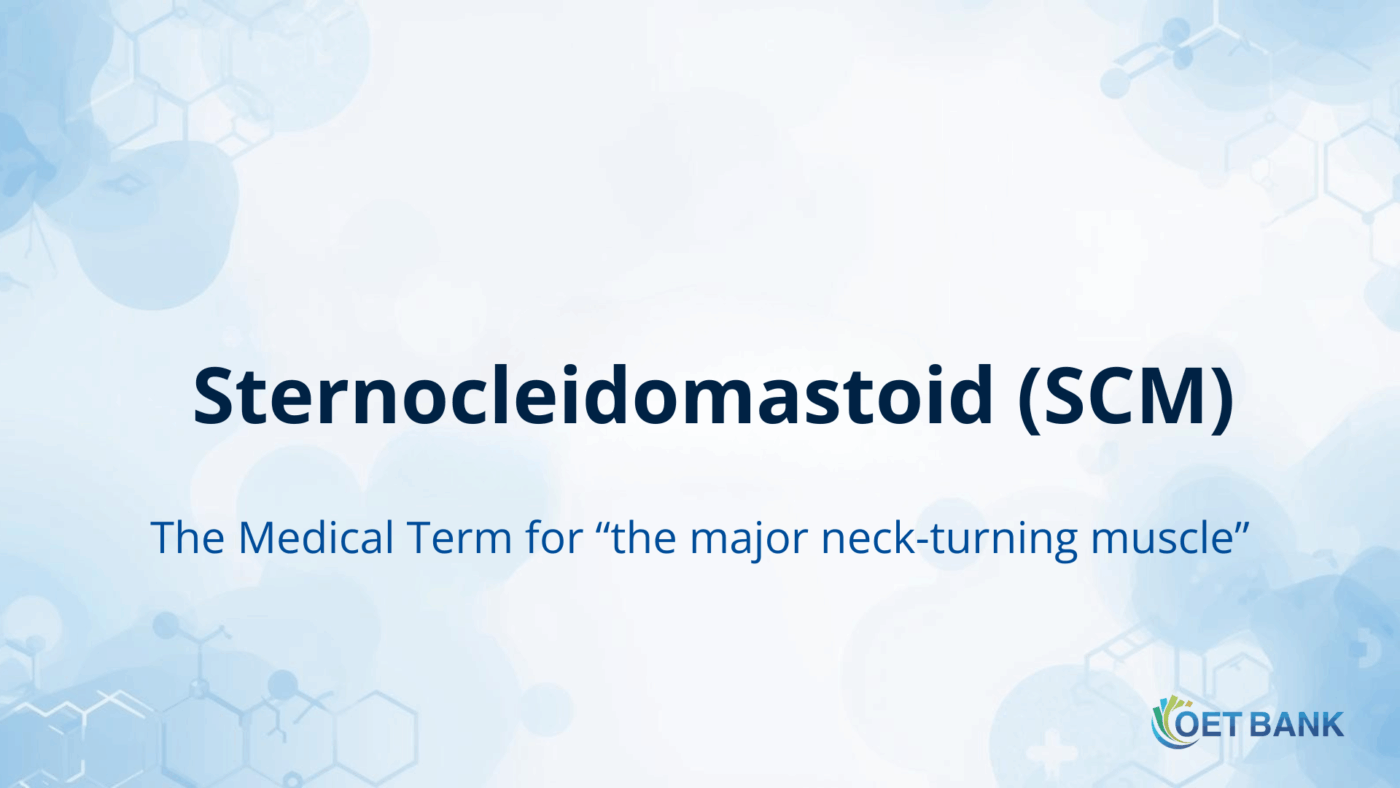OET Vocabulary, Word of the Day
Sternocleidomastoid (SCM) – Meaning and Usage in Medical English

👁 What Does “Sternocleidomastoid” Mean?
The term sternocleidomastoid literally describes its attachments: the sternum (sterno-), the clavicle (cleido-), and the mastoid process behind the ear.
The word comes from a combination of Greek and Latin anatomical roots, and it is used universally in medicine, anatomy, physiotherapy, and ENT examinations.
Clinicians usually refer to it in full as sternocleidomastoid, or by its common abbreviation SCM.
You will hear this term in physical exams, musculoskeletal assessments, and descriptions of neck rotation, posture, or muscle strain.
🔍 Clinical Usage
The sternocleidomastoid appears frequently in clinical documentation because it plays a key role in head movement and neck stability.
Healthcare professionals may reference the SCM when:
- palpating for tenderness, tightness, or spasm
- assessing limited neck rotation or torticollis
- documenting posture-related neck pain
- evaluating trauma or whiplash cases
- checking for lymph node enlargement along the anterior neck
You might see it abbreviated in notes as:
| Term | Meaning |
|---|---|
| SCM | Sternocleidomastoid |
| R-SCM / L-SCM | Right or Left sternocleidomastoid |
| SCM spasm | Muscle tightness or hypertonicity |
A simple example in clinical context:
“Tenderness noted over the left SCM on palpation.”
→ The clinician feels pain when pressing the patient’s left sternocleidomastoid.
🎥 Watch the Short Video
👉 Watch our 30-second clip:
Sternocleidomastoid – Learn how to pronounce it and understand its clinical meaning.
🌍 Study with OET Bank
Strong English skills are essential for success in healthcare communication.
At OET Bank, we strengthen your medical English through our original learning materials, designed specifically for international healthcare professionals who want to use English confidently in real clinical settings.
👉 Discover OET Bank learning materials
https://oet-bank.com/shop


